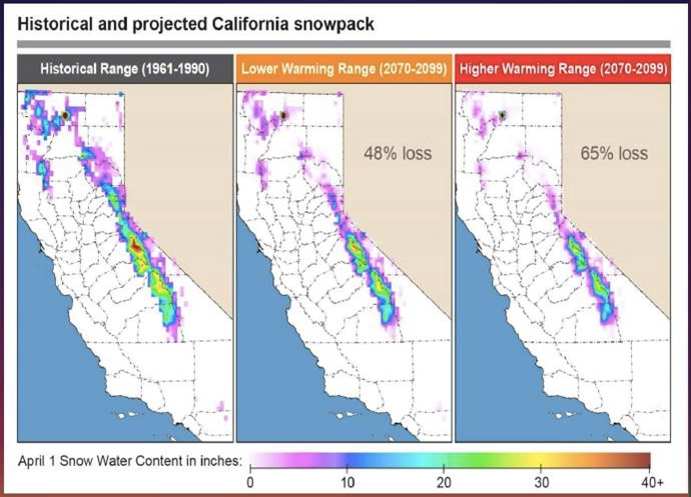You are here
Science Resources: Water and the Law
What Causes Drought?
Droughts are triggered by a range of causes. Some droughts are triggered by oscillations in ocean temperature variability that in turn lead to fluctuations in land temperatures and changes in local weather patterns. For example, the slowing down of oscillations in North Pacific and North Atlantic sea surface temperature variability over the past fifty years has led to increased land surface temperature variability, which has in turn led to more persistent droughts in North America and the Mediterranean [11].
Feedback loops between air temperature, soil moisture, and the amount of moisture in the atmosphere can accentuate a drought. Low soil moisture leads to a heating and drying out of the near-surface atmosphere, which in turn leads to the soil drying out even further. At the same time, low soil moisture decreases moisture recycling and the formation of clouds. These feedback cycles can lead to increased drought persistence and rapid intensification of drought conditions (also known as “flash droughts”) [12]. For this reason, it is important that evaluations of drought severity are based on probability distributions of multiple variables, rather than a single variable like precipitation [13].
The timing and type of precipitation can be as important as the magnitude of precipitation in causing hydrologic drought. For example, many parts of the western United States are facing a transition from a snow- to a rain-dominant hydrologic regime due to climate change. As a result, the amount of water stored in western snowpack is expected to decrease [14]. Many crops require water during late spring and early summer—water that typically comes from the snow melt, as rainfall typically does not fall during the agricultural growing season. A reduced snowpack thus leads to reduced water availability for crops during the summer [15]. Changes in precipitation regimes can cause both agricultural and hydrologic drought.
[11] T. Lenton, V. Dakos, S. Bathiany and M. Scheffer, “Observed trends in the magnitude and persistence of monthly temperature variability,” Scientific Reports, vol. 7, p. 5940, 2017.
[12] S. Zhou, et al., “Land–atmosphere feedbacks exacerbate concurrent soil drought and atmospheric aridity,” PNAS, vol. 116, no. 38, p. 18848–18853, 2019.
[13] A. AghaKouchak, L. Chen, O. Mazdiyasni and A. Mazdiyasni, “Global warming and changes in risk of concurrent climate extremes: Insights from the 2014 California drought,” Geophysical Research Letters, vol. 41, p. 8847–8852, 2014.
[14] A. Gershunov, T. Shulgina, et al., “Precipitation regime change in Western North America: The role of Atmospheric Rivers,” Scientific Reports, vol. 9, p. 9944, 2019.
[15] J. Lu, et al., “Mapping the sensitivity of agriculture to drought and estimating the effect of irrigation in the United States, 1950–2016,” Agricultural and Forest Meteorology, Vols. 292–293, p. 108124, 2020.

